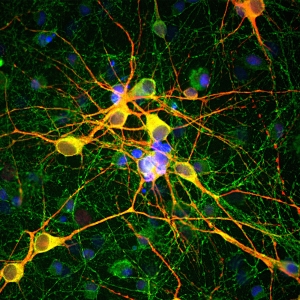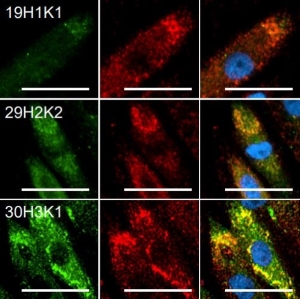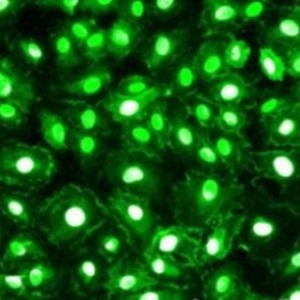Product Details
Product Sizes
| Size | List Price | Price | Cart |
|---|---|---|---|
| 50 ug | $302.50 | Add to Cart |
SMAD2 belongs to the SMAD, a family of proteins similar to the gene products of the Drosophila gene 'mothers against decapentaplegic' (Mad) and the C. elegans gene Sma. SMAD proteins are signal transducers and transcriptional modulators that mediate multiple signaling pathways. SMAD2 mediates effects of the transforming growth factor (TGF)-beta, and thus regulates multiple cellular processes, such as cell proliferation, apoptosis, and differentiation. SMAD2 is recruited to the TGF-beta receptors through its interaction with the SMAD anchor for receptor activation (SARA) protein. In response to TGF-beta signal, SMAD2 is phosphorylated by the TGF-beta receptors. The phosphorylation induces the dissociation of this protein with SARA and the association with the family member SMAD4. The association with SMAD4 is important for the translocation of this protein into the nucleus, where it binds to target promoters and forms a transcription repressor complex with other cofactors. |
Images
Immunohistochemical detection of SMAD-2 in mouse skin. Tissue was fixed with 4% formaldehyde and cut into 10 μm thick cryostat sections. Tissue was incubated with rabbit polyclonal antibody to SMAD-2 at 12 μg/mL overnight at 4°C followed by incubation with Donkey anti-rabbit Rhodamine Red conjugated secondary antibodies at 1:200. Nuclei of keratinocytes were counterstained with DAPI (blue).
Western blot analysis of RA21025






